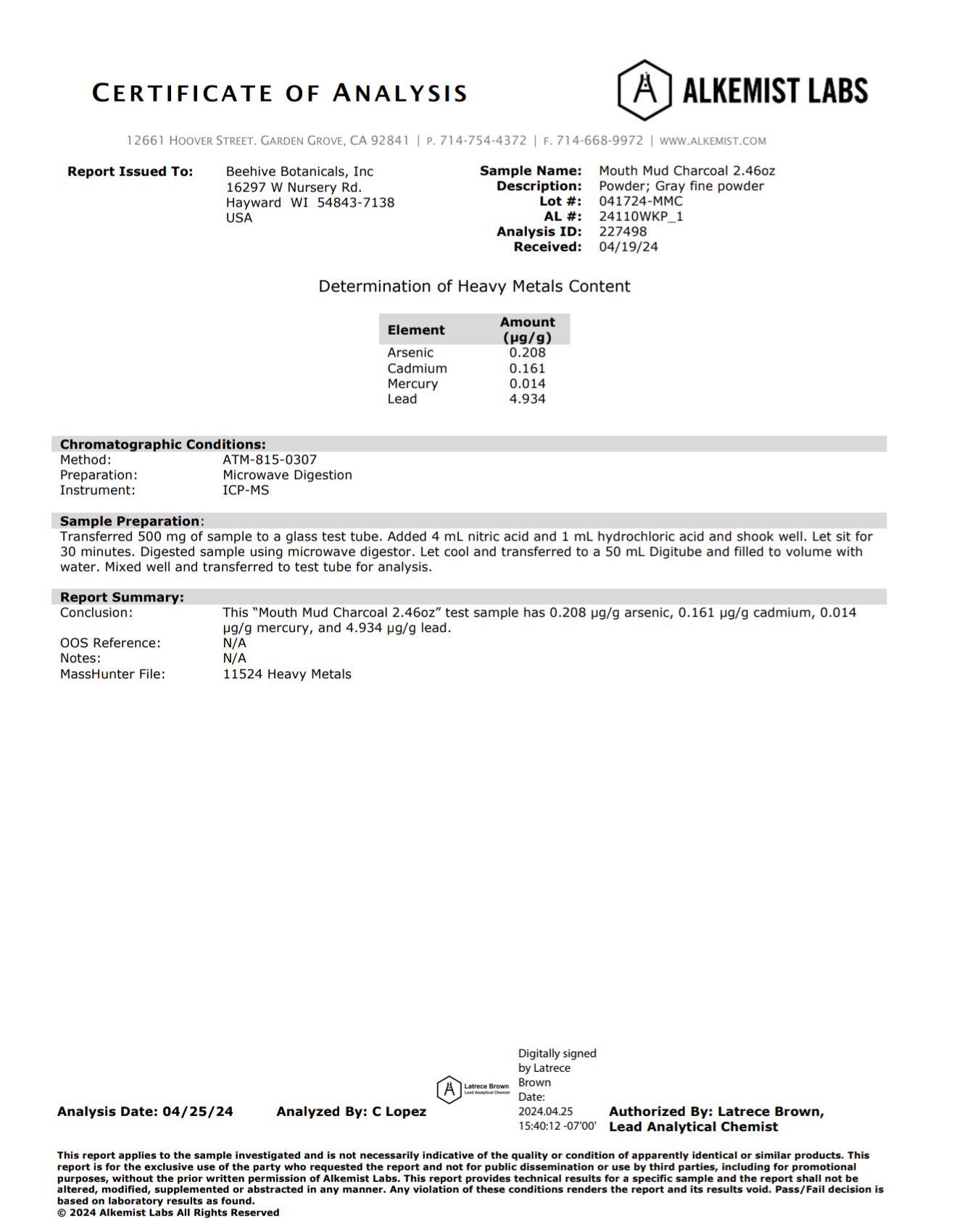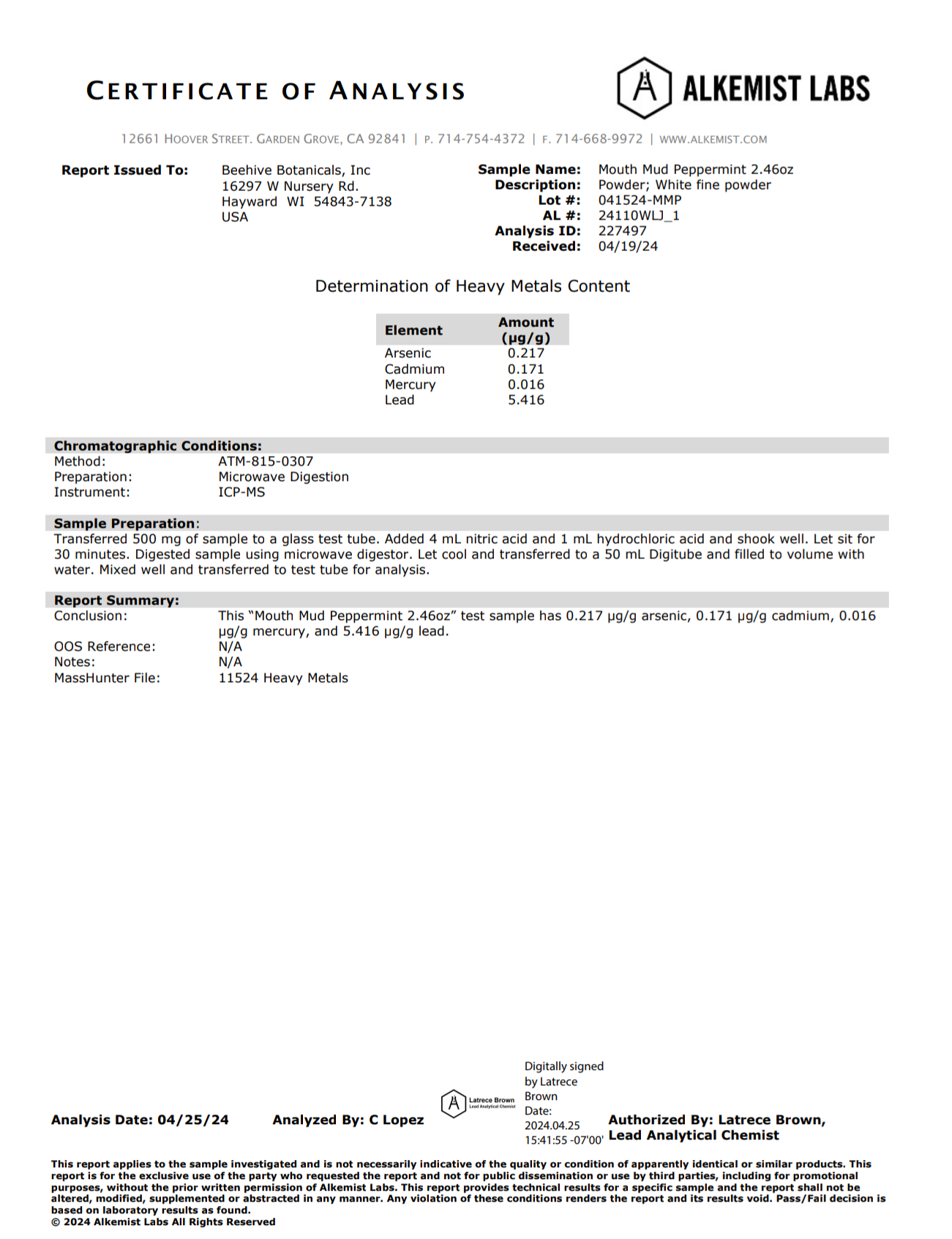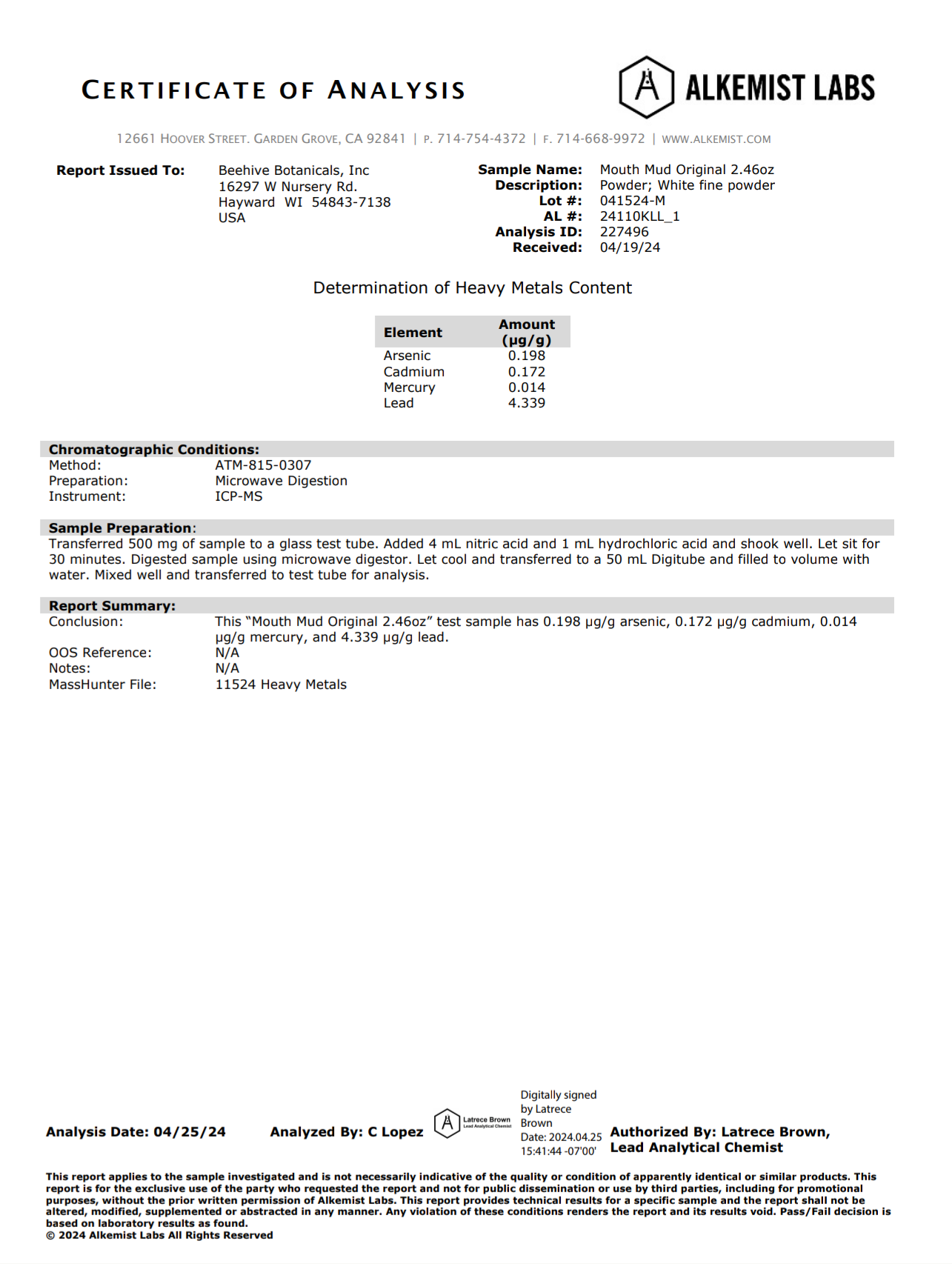Wild Wood Apothecary’s Commitment to Safety: Understanding Heavy Metals in Natural Products
At Wild Wood Apothecary, your health and safety are our top priorities, and we believe in being fully transparent about what’s in our products. Since our tooth powders are made from natural, mineral-rich ingredients, trace amounts of naturally occurring elements like lead, arsenic, cadmium, and mercury can be found in them—just like in many everyday natural products, including fruits, vegetables, and even drinking water.
Here’s the key thing to know: the trace levels of these elements in Mouth Mud are well below the strict safety limits set by the FDA for cosmetic products, including tooth powders. In fact, the FDA’s limit for lead in cosmetics is 10 micrograms per gram (µg/g), and all our products test significantly below that. For example, our highest lead level is 5.4 µg/g—nearly half of the FDA’s limit (FDA Guidance for Industry on Lead in Cosmetics).
Understanding Naturally Occurring Minerals vs. Industrial Lead
Now, let’s talk about lead specifically because we know that word can sound alarming. There’s a big difference between the naturally occurring lead found in minerals and the harmful, industrial lead used in things like old paint, pipes, and gasoline.
- Naturally occurring lead is found in soil, rocks, and clay—bound tightly within the mineral structure. This form of lead is not easily absorbed by the body because it's not in a free, bioavailable state (ITRC on Lead Bioavailability). In fact, trace amounts of naturally occurring lead are present in many foods we eat every day, like fruits, vegetables, grains, and even drinking water, simply because plants absorb minerals from the soil they grow in. This is completely normal and expected in natural environments.
- In contrast, industrial lead, like what’s found in old paint and contaminated environments, is unbound, synthetic, and far more bioavailable, making it easier for the body to absorb and harmful even in small amounts (CDC on Lead Exposure).
The lead in Mouth Mud comes from natural mineral sources, similar to what you'd find in clays used for skincare or even in certain vegetables grown in mineral-rich soils.
How Each Mouth Mud Variety Measures Up
Here’s how each variety of Mouth Mud compares to FDA safety limits:
FDA Safety Limits for Cosmetic Products (Including Tooth Powders):
- Lead: 10 µg/g (FDA Guidance)
- Arsenic: 3 µg/g (commonly referenced in cosmetic guidelines, though not officially set by the FDA)
- Cadmium: 0.5 µg/g (based on general cosmetic safety recommendations)
- Mercury: 1 µg/g (FDA Mercury in Cosmetics Guidelines)
Mouth Mud Charcoal (2.46 oz)
- Lead: 4.93 µg/g → 50% below the FDA limit
- Arsenic: 0.208 µg/g → 93% below the cosmetic safety threshold
- Cadmium: 0.161 µg/g → 68% below the general cosmetic limit
- Mercury: 0.014 µg/g → 98.6% below the FDA limit

Mouth Mud Peppermint (2.46 oz)
- Lead: 5.42 µg/g → 46% below the FDA limit
- Arsenic: 0.217 µg/g → 92.8% below the cosmetic safety threshold
- Cadmium: 0.171 µg/g → 65.8% below the general cosmetic limit
- Mercury: 0.016 µg/g → 98.4% below the FDA limit

Mouth Mud Original (2.46 oz)
- Lead: 4.34 µg/g → 57% below the FDA limit
- Arsenic: 0.198 µg/g → 93.4% below the cosmetic safety threshold
- Cadmium: 0.172 µg/g → 65.6% below the general cosmetic limit
- Mercury: 0.014 µg/g → 98.6% below the FDA limit

Bottom Line
All three varieties of Mouth Mud are well within the safety limits set by the FDA for products used in and around the mouth. We’re proud of our natural ingredients, and we rigorously test every batch to ensure quality and safety. We understand your concerns, and we’re always here to answer your questions—because when it comes to your health, transparency isn’t just a policy; it’s our promise.
